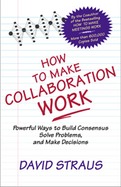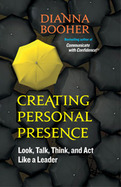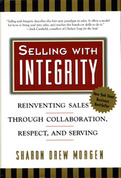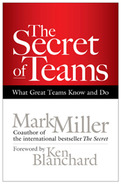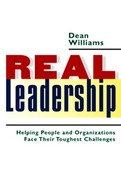Search Results: ""
Results 115-120 of 1358
Every day we work with others to solve problems and make decisions, but the experience is often stressful, frustrating, and inefficient. In How to Make Collaboration Work, David Straus, a pioneer in the field of group problem solving, introduces five principles of collaboration that have been proven successful time and again in nearly every conceivable setting.
Straus draws on his thirty years of personal and professional experience to show how these principles have been applied by organizations as diverse as Ford Motor Company, the U.S. Environmental Protection Agency, Harvard Business School Publishing, Boston Public Schools, Kaiser Permanente, the city of Denver, and many others.
How to Make Collaboration Work shows how collaboration can become a joy rather than a chore-a kind of chemical reaction that releases far more energy than it consumes.
- By the coauthor of the classic How to Make Meetings Work (more than 600,000 copies sold) and the originator of many of the most popular group decision-making methods
- Describes five time-tested principles for making collaborative efforts more effective, efficient, and even joyful
- Offers examples from Fortune 500 companies, nonprofit organizations, and communities to illustrate the principles in action
"Personal presence is difficult to define but easy to recognize. People with presence carry themselves in a way that turns heads. When they talk, people listen. When they ask, people answer. When they lead, people follow. Personal presence can help you get a date, a mate, a job, or a sale. It can help you lead a meeting, a movement, or an organization.
Presence is not something you’re born with—anyone can learn these skills, habits, and traits. Award-winning speaker and consultant Dianna Booher shows how to master dozens of small and significant things that work together to convey presence. She details how body language, manners, and even your surroundings enhance credibility and build rapport. You’ll learn to use voice and language to demonstrate competence, deliver clear and memorable messages, and master emotions. You’ll learn to think strategically, organize ideas coherently, and convey to others genuine interest, integrity, respect, and reliability.
Take her self-assessment to measure your progress. With Dianna Booher’s expert, entertaining advice, you can have the same kind of influence as the most successful CEOs, celebrities, and civic leaders.
"
How can you respect the customer's buying patterns, rather than forcing your selling patterns on them?Until now, sales has been based on a seller creating an environment in which their product gets promoted. Both traditional and consultative selling utilize essentially the same skills: have a great opening, a comprehensive pitch, product-focused questions,Until now, sales has been based on a seller creating an environment in which their product gets promoted. Both traditional and consultative selling utilize essentially the same skills: have a great opening, a comprehensive pitch, product-focused questions,
The Secret of Teams
2011
Teams are critical to the success of every organization. Departmental, interdepartmental, cross-functional, ad hoc, task-specific—teams do everything from planning the office party to setting the annual budget to establishing performance goals.
But what separates the teams that really deliver from the ones that simply spin their wheels? What is the secret of high-performance teams?
As he did in The Secret, Mark Miller uses a compelling business fable to reveal profound yet easily grasped truths that can dramatically transform any organization. Debbie Brewster, the heroine of The Secret, has been promoted and is now struggling with taking her new team to the next level. Her old mentor, Jeff Brown, the company’s CEO, sends her out to find the secret of teams. On her journey she learns from three very different teams—the Special Forces, NASCAR, and a local restaurant.
Debbie and her team discover the three elements that all successful teams have in common. But that’s just the beginning. The devil is in the details, as the story of Debbie’s efforts to actually implement the three elements shows. You’ll learn how to change entrenched ways of thinking and acting, what you have to do to optimize each of the three elements of a successful team, how to measure your progress, and more.
Creating high-performance teams does more than just give your organization a competitive advantage. It can be a performance multiplier that significantly improves results while honoring and developing people. It may be the ultimate win-win-win that your organization is seeking.
The She Spot
2008
Offers concrete, field-tested advice for helping nonprofits, social advocacy organizations, and political campaigns connect more effectively with women
Includes examples from both the for-profit and non-profit sectors
Written by top executives from the largest public interest communication firm in the country
The secret to changing the world is hidden in plain sight—in fact, it’s half the population. Women vote more, volunteer more, and give to more charities than men do. They control over half of the total wealth in America. Corporations have long recognized the growing power of woman and have been targeting them for years. The She Spot is a practical and provocative primer showing how nonprofits and social change organizations can do it too.
Lisa Witter and Lisa Chen reveal surprising insights into women’s real social priorities (for example, in one poll only 7% of women identified “protecting reproductive choice," supposedly the women’s issue, as a top priority for Congress). They describe four core principles—care, control, connect, and cultivate—for designing messages that will resonate with women of all ages and backgrounds. And using case histories from companies like Home Depot, T-Mobile and Kellogg’s as well as nonprofits like MoveOn.org, The American Lung Association and The Environmental Defense Fund, they explain precisely how to put these four principles into practice.
This book makes the case that simply painting your marketing campaign “pink” and calling it a day will miss the mark with most women. Witter and Chen show that you can expand your outreach to connect with women in addition to men—think both/and, not either/or. You’ll raise more money and recruit more supporters for your cause. In the end, those who hit the “She Spot” claim the power to create a better, brighter world for all of us.
Real Leadership
2005
Too many organizations today play follow the leader: the commander articulates a "vision" and people uncritically go along with it. But this style of leadership is ultimately ineffective and even dangerous. It hampers people's ability to anticipate and react to changing circumstances. And if the leader's vision is flawed, the entire organization will suffer. In Real Leadership, Dean Williams argues that the true task of the leader is to get people to face the reality of any situation themselves and develop strategies to deal with problems or take advantage of opportunities. Leaders who are responsible with their power and authority don't dictate; they help people determine what shifts in their values, habits, practices and priorities will be needed to accommodate changing conditions and new demands. Williams details how to apply this new approach to six different challenges that every organization faces. Throughout, he uses examples from his own experiences--working with organizations as diverse as the government of Singapore, Aetna Life and Casualty, and the nomadic Penan tribe in Borneo--as well as historical examples and the insights gleaned from his many interviews with presidents, prime ministers, and business leaders to demonstrate the practical application of real leadership in the real world. At a time when so many "visionary" leaders have led their organizations to disaster, Real Leadership offers a needed, proven alternative.Too many organizations today play follow the leader: the commander articulates a "vision" and people uncritically go along with it. But this style of leadership is ultimately ineffective and even dangerous. It hampers people's ability to anticipate and react to changing circumstances. And if the leader's vision is flawed, the entire organization will suffer. In Real Leadership, Dean Williams argues that the true task of the leader is to get people to face the reality of any situation themselves and develop strategies to deal with problems or take advantage of opportunities. Leaders who are responsible with their power and authority don't dictate; they help people determine what shifts in their values, habits, practices and priorities will be needed to accommodate changing conditions and new demands. Williams details how to apply this new approach to six different challenges that every organization faces. Throughout, he uses examples from his own experiences--working with organizations as diverse as the government of Singapore, Aetna Life and Casualty, and the nomadic Penan tribe in Borneo--as well as historical examples and the insights gleaned from his many interviews with presidents, prime ministers, and business leaders to demonstrate the practical application of real leadership in the real world. At a time when so many "visionary" leaders have led their organizations to disaster, Real Leadership offers a needed, proven alternative.
- Presents a new, more effective approach to leadership: helping people to honestly face reality and deal with their most pressing problems, rather than imposing ideas and solutions on them
- Shows how to apply this new approach to six major organizational challenges
- Offers actual examples of real leadership in action


